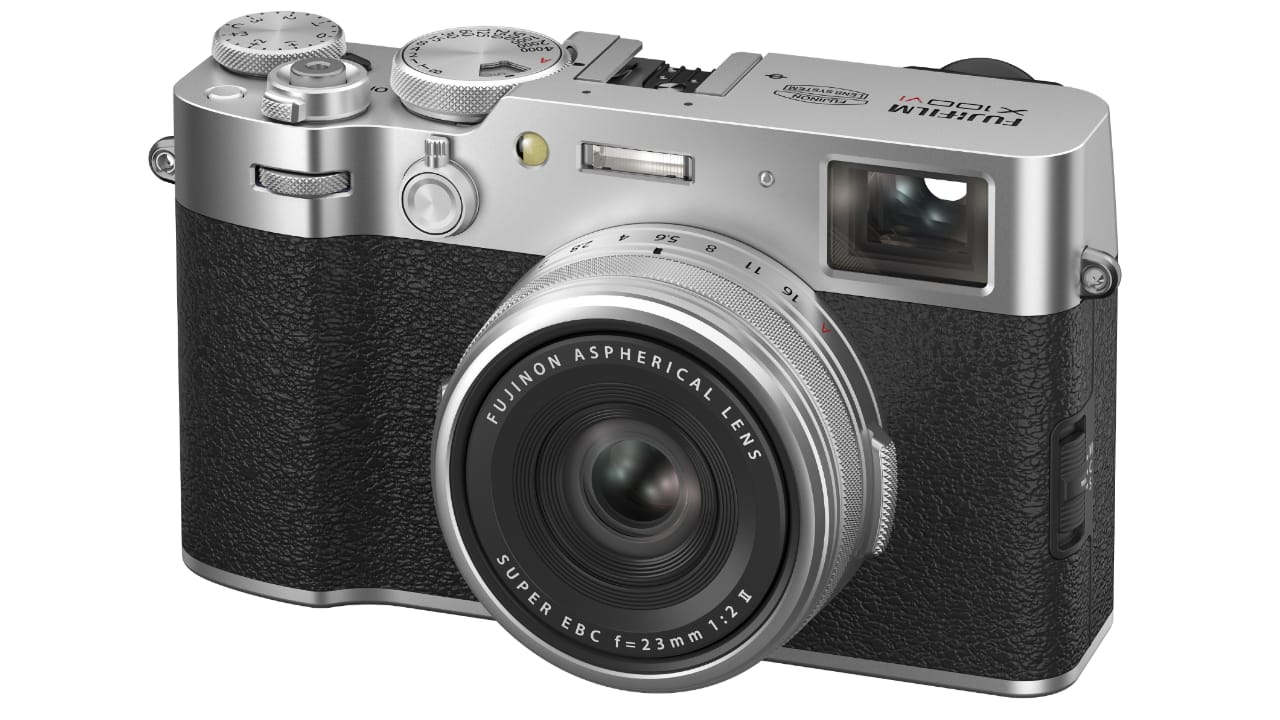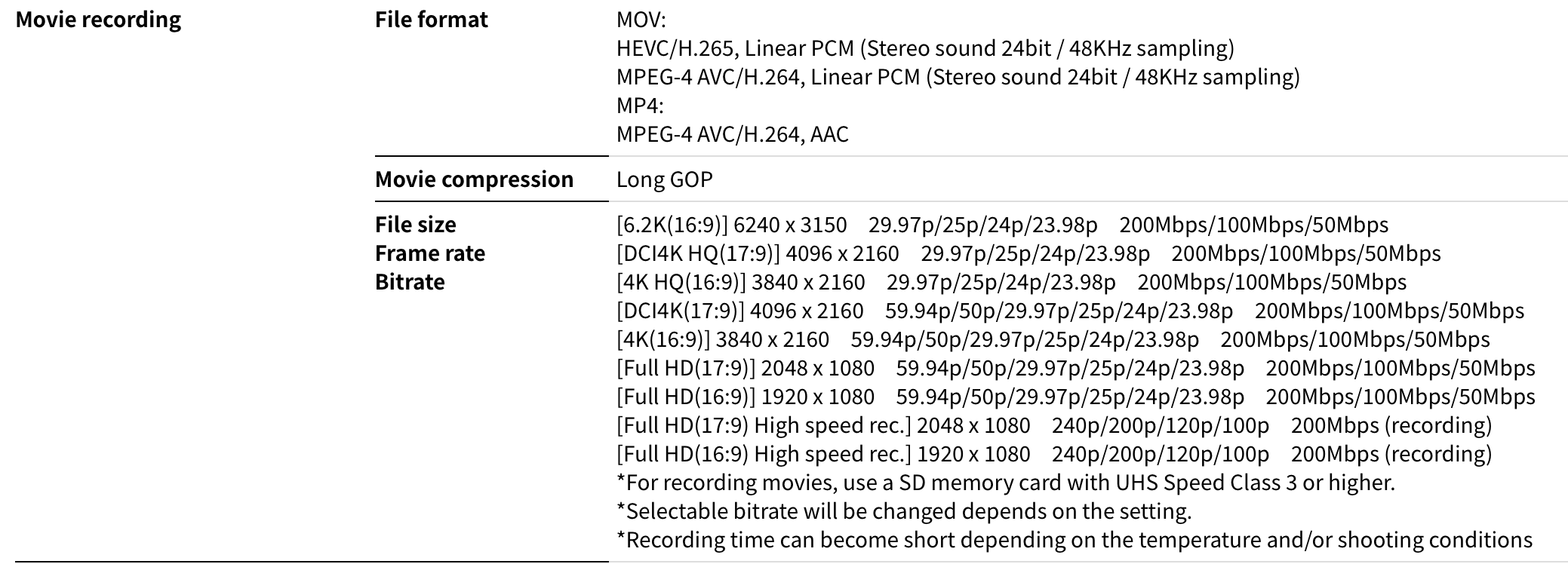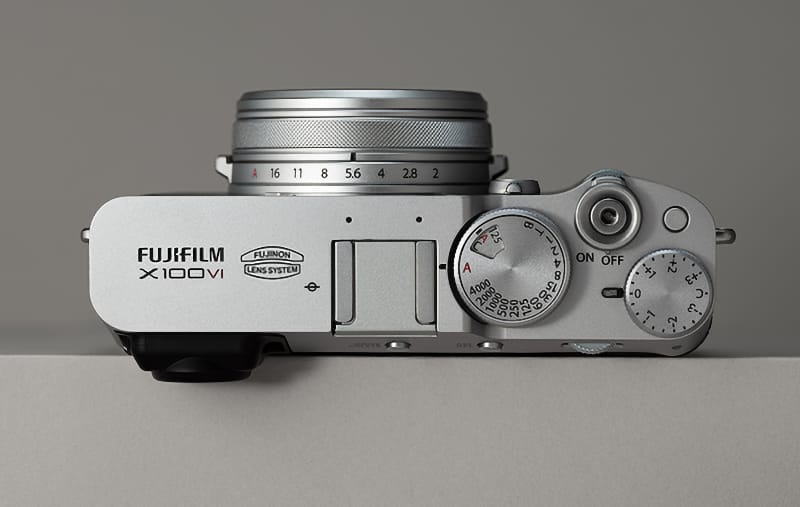
Fujifilm follows up the wildly popular X100V with the X100VI, which adds a 40MP sensor, 6.2K30P recording, and 6-stop IBIS to the range (along with $200 to its price).
The Fujifilm X100V blew up on TikTok and, as a result, has been one of the most successful cameras of recent times. At one point, getting hold of one involved negotiating either an endless number of backorder listings or taking a deep breath and going with some of the silly prices being asked on the secondary market.
Fujifilm, therefore hasn’t been daft and changed too much with its successor, the X100VI. It’s pretty much the same shape; it’s only marginally heavier, thanks to the introduction of IBIS. And while the 23mm f/2 fixed lens that was first introduced on the X100V is rather limiting, the camera provides enough new bells and whistles from further up in the Fujifilm range to make it interesting for a variety of low-level video uses.
At its heart, the new Fujifilm X100VI is equipped with the 40MP back-illuminated X-Trans CMOS 5 HR sensor. Fujifilm says that this has a new impressive pixel structure that allows light to be more efficiently captured compared to prior X100 Series cameras. ISO 125, which on the previous X100V model was only an extended sensitivity option, is now available natively on the X100VI.
X100VI is also capable of 6.2K30P movie recording in 4:2:2 10-bit color, a first for the X100 Series. 4K/60p and high-speed 1080/240p are also available, maximizing video flexibility. Here’s the full table of specs.

Like its predecessor, the X100VI has a four-stop ND filter built into the lens. This, of course, helps deliver a wide aperture in bright conditions to separate the subject from the background or extends shutter speeds to emphasize movement and is one of the factors that makes it appealing for video even despite its limitations.
The camera comes with 20 of Fujifilm’s popular Film Simulation modes, including the new REALA ACE mode, which applies a diverse range of distinctive tones to the user’s images.
It is also the first camera in the X100 Series to incorporate a 5-axis, in-body image stabilization function with up to 6.0 stops. An autofocus prediction algorithm provides what the company says is reliable focusing even when recording continuously moving subjects with its AF X-Processor 5, and can individually detect animals, birds, cars, motorcycles, bicycles, airplanes, trains, insects, and drones. The IBIS seems to have contributed to a bit of weight gain, but it’s marginal, and the whole thing with lens and battery still weighs only 521g (1.15 lbs).

The popular Advanced Hybrid Viewfinder allows the user to switch between the old-school optical viewfinder and the flat two-way tilting electronic version. The latter is equipped with a high-resolution OLED panel with approximately 3.69 million dots. A sort of picture-in-picture function allows a small EVF to be simultaneously displayed on the OVF, allowing users to view either the entire frame or the area of critical focus.
Interestingly, it also offers an accessory-free, native Camera to Cloud integration for Adobe’s Frame.io, joining the much more expensive X-H2, X-H2S, and GFX100 II in providing the capability.
As with its predecessor, aluminum is used for the top and bottom surfaces of the X100VI body, and anodized aluminum is used on the camera surface to produce a high-quality finish. The shape of the grip has been fine-tuned to ensure a secure yet comfortable feel, while Fujifilm says the positions of the buttons on the back have been designed to maximize ease of operation with the right hand.
As far as accessories go, these are usefully headlined by the prospect of weather resistance being available when the optional AR-X100 adapter ring ($49.99) and the PRF-49 protection filter ($55.99) are used in conjunction with X100VI’s lens. An optional LH-X100 lens hood ($139.99) is also available. Two separately offered Fujifilm conversion lenses allow the user to change the focal length without changing the optical performance and give a bit more flexibility to that fixed lens. The WCL-X100 II ($349 is a dedicated wide conversion lens that multiplies the fixed focal length by approximately 0.8x, converting it to 28mm (35mm format equivalent). At the same time, the TCL-X100 II ($349) is a dedicated teleconversion lens for narrowing the field of view by multiplying the fixed focal length by approximately 1.4x, converting it to 50mm (35mm format equivalent).
To celebrate Fujifilm’s 90th anniversary year in 2024, a special Limited Edition of 1,934 X100VI cameras are engraved with the corporate brand logo from Fujifilm’s founding in 1934, and each unit bears a unique serial number.
That comes in at $1999, while the normal camera is a pleasing $1599 (pleasing given the presence of 6K shooting and those ND filters) and will be available in early March.
Tags: Production Cameras Fujifilm mirrorless


Comments